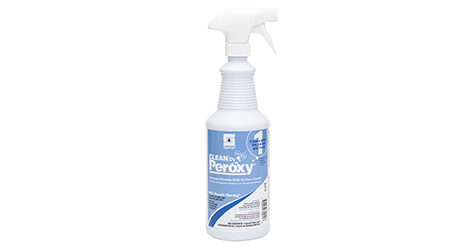Are you or your workers the cause of the bleach spots in the workplace?
Well now you can be the hero.
We’ve all seen those troublesome bleach spots on carpet in hotels, hospitals or office buildings.
They are often found along office hallways, outside a maid’s closet in a hotel, outside the laundry room of an apartment building or around the door of the restroom.
It’s possible that staff could be the reason they happened in the first place.
Usual culprits accidentally drip bleach from a cleaning rag, spray bottle, bucket or mop cart.
And that can be a terrible feeling if you know your employees are the cause of this troublesome problem.
But your department can also be the one who fixes it.
With the ever increasing amount of carpet dye products available on the market, you now can be the hero in a “bleach spot” situation.
White or yellow discolorations tend to draw attention to the eye and are often the first thing seen when walking into a room.
The use of dyes can camouflage these spots to not be such an eyesore.
While no dye job is ever perfect, at least it won’t be the first thing you, your client or boss sees when they walk into a room.
Tricks of the Trade
You do not need to be a dye expert to fix little dime to quarter size spots.
What you do need to have is a full color spectrum (i.e., not be color blind) and somewhat of an artistic eye.
Women are naturally great at color repair because of their experience with blending makeup colors.
Should the spots be bigger than your fist, it helps to have more experience and expertise with dyes.
It is, of course, harder to camouflage a larger discoloration then a few smaller ones.
If this is the case, more education and practice are necessary.
Other factors that make a dye job more challenging are the color of the discoloration.
White bleach spots are the easiest to fix because no color theory is involved.
Simply find the color dye of your carpet and apply using the rules in this article.
Yellow or orange discolorations can be a bit trickier.
Pink or purple discolorations cannot be fixed with acid dyes because those fibers are not nylon or wool.
In the case that you are dealing with a yellow or orange discoloration, you must use color theory when applying your dye.
For example, what makes the color green?
Blue and yellow make green.
So, if you have a green carpet with yellow discolorations, adding a touch of blue to the area and then topping with a green color is the best remedy.
If you only applied a green color on the yellow spot, it would look better but would still be missing the important hue of blue.
Therefore you must always add back the missing primary color.
Types Of Dye
Acid dyes are available in liquid or powder form.
Beginners usually tend to start with liquid dyes or dye pens because of their ease of use and no need for additional chemicals.
Powder dyes on the other hand are more cost-efficient but also require more mixing and the use of chemicals to help set the dye and stabilize the pH.
Regardless of the type of dye you chose, two important rules must be followed.
First, acid dyes must be hot; at least a 150-degrees Fahrenheit.
This heat allows for the proper chemical bond to occur with a nylon or wool fiber and an acid dye.
Also, to penetrate through common stain blockers on carpet, you must have heat above 150-degrees.
Without proper heating, you dye job is subject to premature fading.
Secondly, start with a very small amount of dye and apply the lightest shade possible.
There is minimal to no risk in applying too light of a shade of carpet dye.
On the other hand, if you apply a permanent dye at too dark of a color, it might be impossible to fix.
In addition to the dye application, you must also neutralize the bleached area to defuse the left over bleach crystals that are present in the carpet.
Bleach crystals cannot be neutralized by cleaning or household remedies like vinegar.
There are various products on the market for liquid or powder bleach neutralizers.
Remember, if you do not neutralize the bleach fully, the discolored spot will return.
Every Carpet Is Different
There is not one single answer in how to fix color problems on all carpet.
The user of the dye must evaluate the colors present (i.e., the color of the discoloration and the original color of the carpet), the colors missing (i.e., what color is lacking from the discoloration) and then which exact colors to apply.
In general, the more color choices you have, the better the job will turn out.
Whether it was you, an employee or a client that spilled the bleach, know that the carpet is not ruined.
Dye options are available and often a better option than carpet patches or replacement of the carpet.
Should you have a few small bleach spots, try fixing yourself.
If you have larger or more difficult bleach spots, seek training or a professional dyer.
And remember; always be cautious when using bleach around any carpeting.


